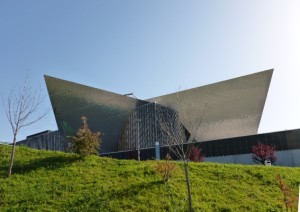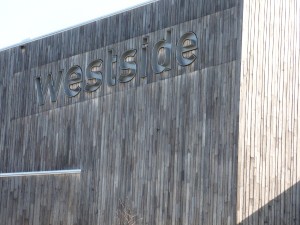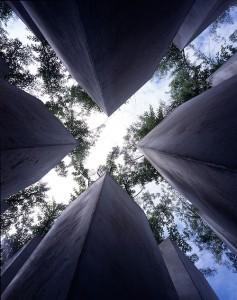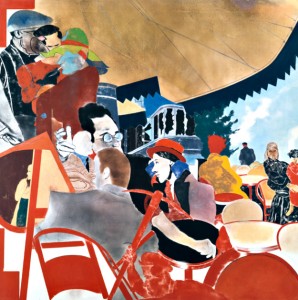It’s not only Jewish history in Germany that continually surprises us with its complexity: the visitors to the Jewish Museum can also be as unexpected as they are diverse. During my tours through the permanent and temporary exhibitions, I have had remarkable encounters. This year among the most unusual was with a group of theologians from the city of Qom, who came to experience the museum at the beginning of October. Most Iranian preachers and imams graduate from the theological seminary at Qom, not far from the capital Tehran and considered, in contrast to the liberal Najaf for instance, a bastion of conservative learning. → continue reading
A Visit from Iran
Swimming with Libeskind
 For enthusiasts of the Jewish Museum, excursions to other Libeskind buildings are imperative. Many are thematically related to the JMB, such as the Felix-Nussbaum-Haus in Osnabrück or the Jewish Museum in San Francisco. But equally worthwhile are the buildings designed for entirely other purposes, such as Westside, a suburban shopping mall completed in 2008 over a highway outside of Berne, Switzerland.
For enthusiasts of the Jewish Museum, excursions to other Libeskind buildings are imperative. Many are thematically related to the JMB, such as the Felix-Nussbaum-Haus in Osnabrück or the Jewish Museum in San Francisco. But equally worthwhile are the buildings designed for entirely other purposes, such as Westside, a suburban shopping mall completed in 2008 over a highway outside of Berne, Switzerland.
 The mall – despite, well, being a mall – shares many features with the Jewish Museum, which was Libeskind’s first building project. The well-trained, or perhaps overly-trained, eye may involuntarily pick up on architectural testimonies to German-Jewish history. → continue reading
The mall – despite, well, being a mall – shares many features with the Jewish Museum, which was Libeskind’s first building project. The well-trained, or perhaps overly-trained, eye may involuntarily pick up on architectural testimonies to German-Jewish history. → continue reading
Riddled with References
Kitaj’s canvasses are riddled with references to artists and scholars, from Erasmus to Herman Melville, from Fra Angelico to Rosa Luxemburg. From a formal perspective, Kitaj’s obsessive use of citations reflects on the visual impact of images and names, signs and references. Conceptually, citations can involve finding artistic forefathers, and building an intellectual community. This is what I find particularly moving about Kitaj’s work: the artist peoples his paintings, like dream worlds, with “adopted ancestors,” who interact with one-another. → continue reading

